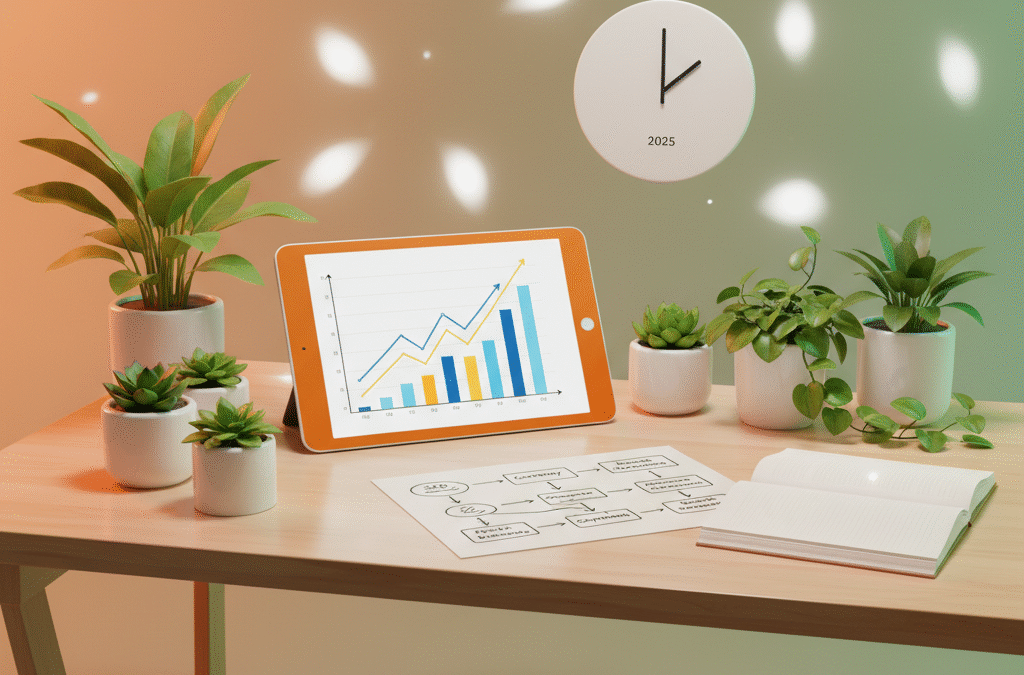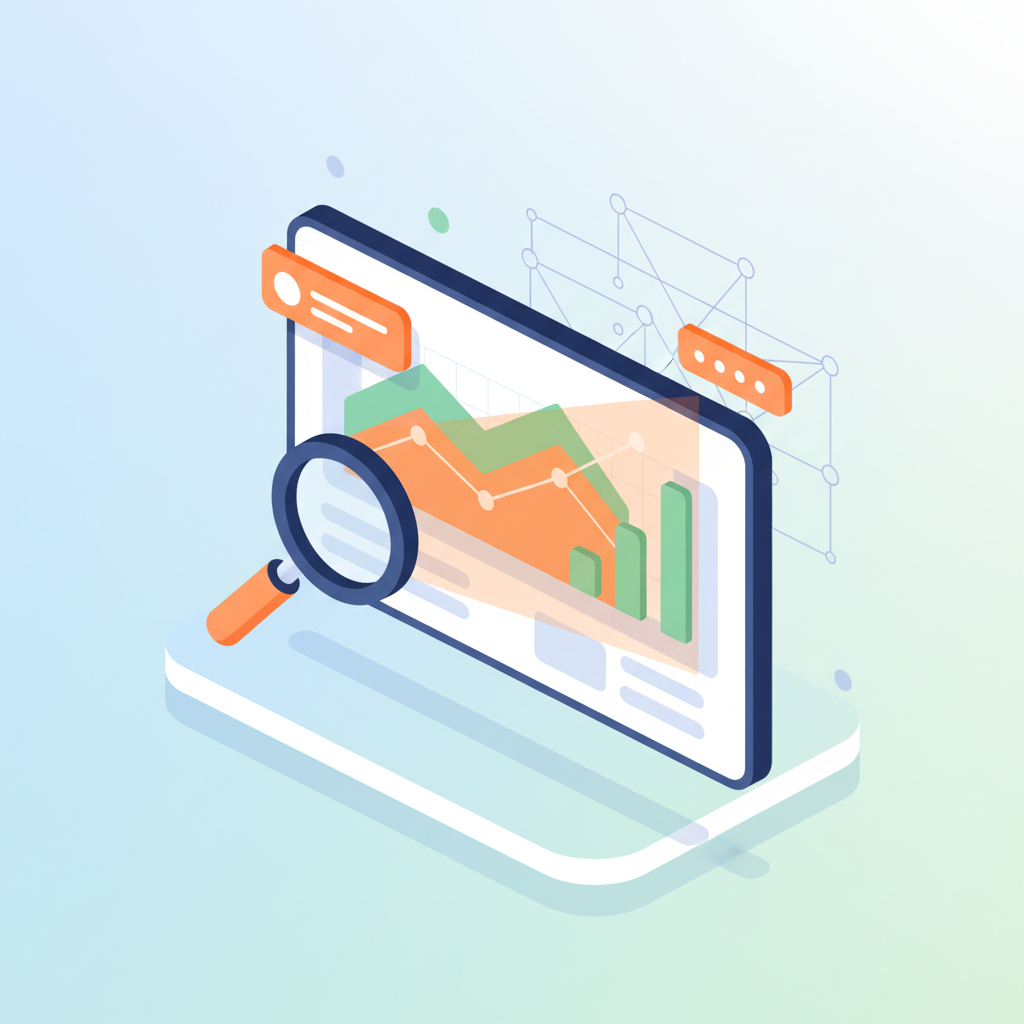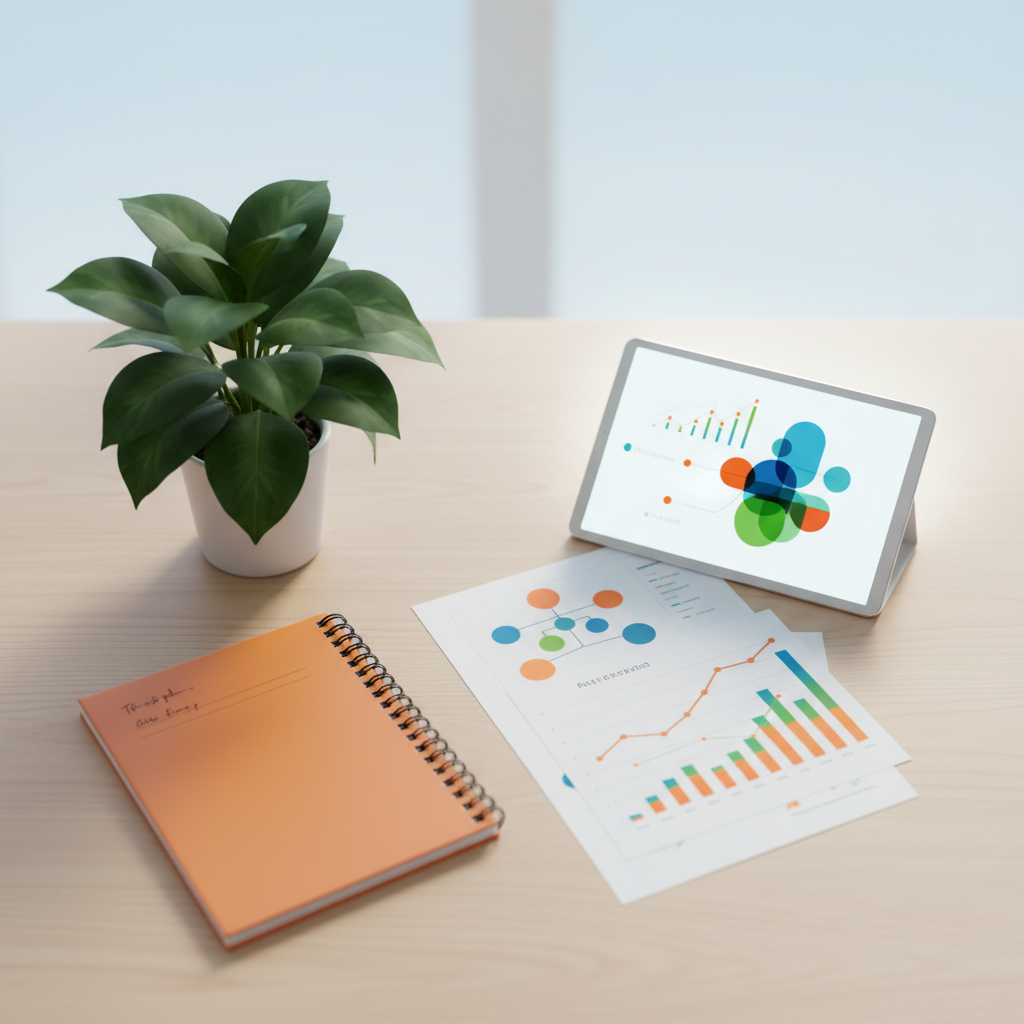Impression Digital Ecommerce SEO Services 2025 Guide
by ESSO Co | Oct 20, 2025 | Blog |

impression digital ecommerce seo services
Key Takeaways
- Many ecommerce founders focus too much on rankings and clicks instead of impressions.
- Impressions are a crucial metric that better predicts growth for ecommerce businesses.
- Successful Shopify brands can plateau by overlooking the traffic visible in Google Search Console.
- Tracking impressions helps uncover hidden traffic opportunities in search results.
Impression Digital Ecommerce SEO Services, 2025’s Guide to Compounding Visibility and Growth
Here’s what most ecommerce founders get wrong about SEO: they obsess over rankings and clicks while ignoring the metric that actually predicts growth, impressions. I’ve watched 7-figure Shopify brands plateau because they couldn’t see the traffic sitting right in front of them, invisible in search results but trackable in Google Search Console.
Impression tracking reveals untapped search visibility, enabling ecommerce brands to optimize content and expand reach beyond clicks for sustained 2025 growth.
With AI answer engines reshaping how customers discover products, impression digital ecommerce seo services have become the difference between brands that scale and those that stagnate. When ChatGPT serves 2.5 billion daily prompts and Google’s AI Overviews appear in 13% of searches, your visibility strategy needs to capture attention before customers even click.
To dive deeper into strategies and real-world case studies, explore our blog for actionable insights on maximizing ecommerce SEO visibility.
Impressions in Digital Ecommerce SEO, The Ultimate Visibility Metric
An impression occurs when your product page, category, or brand appears in a search result, whether someone clicks or not. In ecommerce SEO, this means your Shopify store showed up in Google’s results, your Amazon listing appeared in search, or your brand got mentioned in an AI-powered answer.
What is an Impression?
Served Impression: Your content loads in search results
Viewable Impression: A user actually sees your listing (above the fold)
AI Impression: Your brand appears in ChatGPT, Gemini, or AI Overview responses
The distinction matters because viewable impressions predict traffic growth, while served impressions often include bot crawls and below-fold placements. For ecommerce brands, tracking both reveals whether your products are gaining visibility in the right places, the top 3 organic positions where 75% of clicks happen.
| Metric |
Definition |
Measurement |
Ecommerce Impact |
| Impressions |
Times your page appeared in results |
Google Search Console |
Brand discovery potential |
| Clicks |
Users who visited from search |
GSC + Analytics |
Active traffic generation |
| Reach |
Unique users who saw content |
Social/Paid platforms |
Audience size measurement |
Why Impressions Are Non-Negotiable for Ecommerce Growth in 2025

When AI Overviews appear in search results, organic clicks drop by up to 64%, but impressions remain constant. This creates a visibility paradox: your brand awareness can grow even when website traffic doesn’t. Smart ecommerce operators track impressions as the leading indicator of market demand and search algorithm favor.
The business case is straightforward. Impressions fuel the entire customer journey: awareness drives interest, interest generates clicks, clicks convert to sales. Without impression growth, you’re competing for a shrinking pool of direct website visitors while your competitors capture attention in AI-powered shopping assistants.
I’ve seen Shopify brands with 20,000 daily impressions but only 100 clicks achieve 40% revenue growth within 90 days. The reason? Those impressions created brand recognition that converted through direct traffic, social proof, and word-of-mouth, channels that traditional attribution models miss but impression tracking reveals.
How Ecommerce Impressions Are Tracked, Measured, and Reported
Google Search Console provides the most accurate impression data for organic search, updating every 24-48 hours with exact counts per page, query, and device type. For paid campaigns, Google Ads and Meta track served impressions when your ad loads, while viewable impressions require the ad to appear in the user’s viewport for at least one second.
The measurement logic differs across platforms. GSC counts an impression when your URL appears in search results, regardless of scroll position. Google Ads charges based on viewable impressions, ads seen above the fold. Social platforms like Instagram count impressions when content loads in the feed, creating inflated numbers that don’t correlate with actual visibility.
| Platform |
Impression Type |
Measurement Standard |
Accuracy Level |
| Google Search Console |
Organic search results |
URL appears in SERP |
High (24-48hr delay) |
| Google Ads |
Paid search/display |
Ad loads in viewport |
Very High (real-time) |
| Facebook/Meta |
Social feed placement |
Content loads in feed |
Medium (bot inflation) |
Common tracking pitfalls include bot traffic inflating impression counts, adblockers preventing accurate measurement, and delayed GSC reporting that masks sudden ranking changes. Always cross-reference impression spikes with actual traffic to ensure data integrity and actionable insights.
Impressions vs. Clicks, Unlocking Both Sides of the Ecommerce Visibility Equation
Impressions and clicks tell fundamentally different stories about your ecommerce visibility. Impressions measure how often your pages appear in search results, your brand’s discovery potential. Clicks reveal how compelling your listings are to actual shoppers. The ratio between them, your Click-Through Rate (CTR), becomes your diagnostic tool for optimization.
High impressions with low clicks signals opportunity, not failure. New product pages often see 15,000+ impressions but under 100 clicks as Google tests relevancy. The fix isn’t panic, it’s strategic title tag optimization, meta descriptions that speak to buyer intent, and ensuring your SERP snippet matches search context. When impression digital ecommerce seo services are properly aligned, CTR naturally improves as relevancy increases.
| Metric |
What It Measures |
Optimization Focus |
Healthy Benchmark |
| Impressions |
SERP appearances & visibility potential |
Keyword targeting, content depth, technical SEO |
Steady growth month-over-month |
| Clicks |
User engagement & compelling listings |
Title tags, meta descriptions, SERP features |
2-5% CTR for ecommerce pages |
| CTR |
Listing appeal & search relevancy |
Snippet optimization, position improvement |
Above industry average for position |
The diagnostic power comes from trend analysis. Dropping impressions with stable clicks means you’re losing visibility, competitor content, algorithm shifts, or technical issues. Rising impressions with falling CTR suggests relevancy drift, your content no longer matches evolved search intent.

Impressions serve as your early warning system for SEO performance shifts. Unlike clicks or conversions, which lag behind search behavior changes, impression data reveals demand patterns, competitive movements, and algorithm impacts in near real-time. This makes impressions essential for strategic decision-making around content investment and optimization priorities.
Smart ecommerce operators use impression trends to spot opportunity gaps before competitors. A sudden impression surge for “sustainable packaging” terms signals growing demand worth capturing with dedicated content. Conversely, declining impressions on your best-converting category pages alerts you to competitive pressure or technical issues requiring immediate attention.
Traffic Sprint Impact: After implementing our 100-day framework, a home goods brand saw category page impressions jump from 2,400 to 18,000 monthly, revealing untapped demand that translated to 340% more organic sessions within 90 days.
The strategic value lies in connecting impression data to business outcomes. Pages with high impressions but low conversion rates need content optimization, not more visibility. Pages with growing impressions but stable traffic suggest SERP feature capture, your content appears in AI Overviews or featured snippets, reducing click-through but increasing brand authority. Understanding these nuances transforms raw impression digital ecommerce seo services data into actionable growth strategies.
Impressions in Paid vs. Organic Ecommerce Campaigns
Paid and organic impressions operate under completely different mechanics and serve distinct strategic purposes. Paid impressions are purchased visibility, you control spend, targeting, and frequency through platforms like Google Ads and Meta. Organic impressions are earned visibility, driven by content relevance, technical optimization, and search algorithm decisions.
The cost dynamics reveal why both matter. Paid impressions cost $2-8 per thousand (CPM) depending on competition and audience. Organic impressions cost only the content creation and optimization investment, making them compound over time. However, paid impressions offer immediate control and precise targeting that organic can’t match, especially for new product launches.
| Channel |
Control Level |
Cost Structure |
Best Use Case |
| Organic Impressions |
Algorithm-dependent |
Content investment only |
Long-term brand building & compound growth |
| Paid Impressions |
Direct control |
CPM + ongoing spend |
Product launches & immediate visibility |
The smartest approach combines both strategically. Use paid campaigns to “prime” new product visibility while organic content builds authority. Many successful brands see organic impressions increase 40-60% faster when supported by initial paid exposure, the algorithms interpret early engagement as relevancy signals, boosting organic performance.
Best Ecommerce SEO Tactics to Maximize Impressions in 2025
Maximizing impressions requires systematic optimization across technical, content, and structural elements. The highest-impact move is implementing comprehensive schema markup on every product and category page. Structured data helps search engines understand your content context, increasing chances of appearing in rich snippets, product carousels, and AI-powered answer features.
Content depth drives impression growth more than keyword density. Instead of thin product descriptions, create comprehensive buying guides, comparison content, and in-depth resources. For more expert advice on maximizing your ecommerce SEO, visit our main site for the latest strategies and updates.

Effective impression tracking requires the right tools and systematic reporting workflows. Google Search Console remains the gold standard for organic impressions, providing granular data on how your product pages appear in search results. However, relying solely on GSC limits your visibility into paid channels and cross-platform performance.
For comprehensive impression analysis, combine GSC with Semrush or Ahrefs for competitive impression data, Google Ads for paid search visibility, and platform-specific analytics for social commerce channels. The key is establishing daily monitoring workflows that flag significant impression changes before they impact revenue.
| Tool |
Data Type |
Granularity |
Best For |
| Google Search Console |
Organic impressions |
Page/query level |
Technical SEO diagnosis |
| Semrush |
Competitor impressions |
Keyword clusters |
Market opportunity analysis |
| Google Ads |
Paid impressions |
Campaign/ad group |
Budget allocation decisions |
| Google Analytics 4 |
Cross-channel attribution |
User journey |
Conversion path analysis |
Set up automated weekly reports that track impression trends across your top-performing product categories. Focus on rolling 30-day comparisons rather than day-to-day fluctuations, which often reflect normal search volatility rather than actionable insights. For additional reading, check out our terms page for details on data usage and privacy.
Proven Framework, ESSO Co’s 100-Day Traffic Sprint for Compounding Impressions
Our Traffic Sprint methodology transforms impression growth from a slow, unpredictable process into a systematic 100-day acceleration program. Unlike traditional agencies that focus on individual page optimization, we deploy agentic content systems that create impression momentum across entire product ecosystems.
The framework operates in three distinct phases: Discovery (Days 1-30), where we map impression opportunities using AI-powered intent analysis; Deployment (Days 31-70), where our always-on content systems publish optimized pages at scale; and Amplification (Days 71-100), where strategic internal linking and schema implementation compound initial gains.
Real Results: A Shopify home goods brand increased category page impressions from 2,400 to 18,000 monthly within 45 days using our agentic content approach, generating 340% more qualified traffic without additional ad spend.
What separates our Traffic Sprint from conventional SEO is speed and systematic execution. While traditional agencies manually optimize pages over months, our AI-driven assembly line workflow identifies impression gaps, generates optimized content, and implements technical improvements simultaneously across hundreds of pages.
The impression data itself powers every decision in our Traffic Sprint process. We use GSC impression trends to prioritize which product categories receive content investment first, ensuring maximum visibility impact where search demand is strongest. This data-driven approach consistently delivers measurable impression growth within the first 30 days. For a broader perspective on search engine optimization, you can also review the Wikipedia entry on SEO.
Troubleshooting Impression Problems, Fixes for Ecommerce Operators
Impression problems typically fall into four categories: sudden drops, consistently low visibility, high impressions with poor click-through rates, and inaccurate reporting. Each requires specific diagnostic approaches and targeted fixes.
Sudden impression drops often signal technical issues, crawl errors, indexing problems, or site speed degradation. Check Google Search Console for coverage issues first, then verify that product pages load properly and schema markup remains intact. Gradual impression declines usually indicate content freshness problems or increased competition requiring content updates.
Low impressions for new product pages are normal and expected. However, established pages with declining visibility need immediate attention. Review whether product descriptions match current search intent, update seasonal content, and ensure internal linking supports page authority distribution.
| Problem |
Primary Cause |
Immediate Fix |
Timeline |
| Sudden impression drop |
Technical/indexing issues |
GSC coverage audit |
24-48 hours |
| Low new page impressions |
Insufficient content depth |
Content expansion + internal links |
2-4 weeks |
| High impressions, low CTR |
Poor meta descriptions |
Rewrite titles/descriptions |
1-2 weeks |
| Inaccurate reporting |
Tracking configuration |
Verify GSC property setup |
Immediate |
High impressions with low click-through rates signal a content-intent mismatch. Users see your pages in search results but don’t find them compelling enough to click. Optimize meta descriptions to better match search intent and highlight unique product benefits that differentiate from competitors appearing in the same SERP positions. For more troubleshooting tips and advanced guides, visit our privacy policy page.
Frequently Asked Questions
Why are impressions considered a more important metric than clicks for ecommerce SEO growth?
Impressions reveal how often your product or brand appears in search results, capturing visibility beyond just clicks. For ecommerce, tracking impressions uncovers hidden traffic opportunities and predicts growth more reliably than clicks alone, which can fluctuate based on user behavior and AI-driven answer engines.
How can ecommerce brands effectively track and analyze impressions using tools like Google Search Console?
Ecommerce brands can use Google Search Console to monitor impressions by reviewing which queries and pages generate visibility, identifying trends and gaps. Analyzing impression data alongside click-through rates helps optimize content, prioritize high-potential keywords, and uncover areas to expand reach before focusing on clicks.
What is the difference between served impressions, viewable impressions, and AI impressions in ecommerce SEO?
Served impressions occur when your content loads in search results, regardless of user attention. Viewable impressions happen when a user actually sees your listing above the fold. AI impressions refer to your brand or product being featured in AI-powered responses like ChatGPT or Google AI Overviews, representing a new layer of visibility beyond traditional search.
How do AI-powered search features like ChatGPT and Google AI Overviews impact ecommerce impressions and clicks?
AI-powered search features increase impressions by surfacing your brand in answer snippets and conversational responses, often before users click through. While they can reduce traditional clicks, they expand your presence in the buyer’s decision journey, making impression tracking and AEO strategies essential for capturing AI-driven ecommerce demand.
About the Author
Vijay Jacob is the Founder of ESSO Co, Ecommerce SEO services, agency & consulting – a FosterFBA brand.
ESSO Co specializes in programmatic SEO and AEO (Answer Engine Optimization) for ecommerce brands and operates under FosterFBA (founded in 2018).
Over the past 6 years, our expert team of Ad & SEO Specialists, and a 24/7 stack of specialized AI Agents, has helped 100+ Amazon & Shopify brands unlock their potential, driving more than $100M in additional annual revenue. If you’re an ambitious brand owner ready to scale, you’re in the right place.
🚀 Achievements
- Managed $30M+ in annual client ad spend, delivering $100M+ in ad revenue yearly.
- Helped brands scale from 6-figure ARR to 7 and 8 figures annually.
- Clients see an average 52% surge in ad revenue within weeks.
- 16+ month average client retention, reflecting durable results and trust.
🔍 Expertise
- Data- and systems-driven growth strategies.
- Programmatic & Agentic SEO/AEO built for Google and modern answer engines.
- Comprehensive brand audits to uncover growth opportunities.
Ready to elevate your ecommerce brand? Let’s make this your breakthrough year.
Book a free discovery call to see if our Agentic SEO/AEO growth system is right for you.
Last reviewed: October 20, 2025 by the eCommerce SEO Services Co Team




